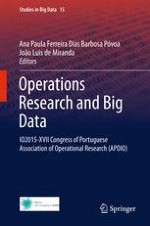The development of Operations Research (OR) requires constant improvements, such as the integration of research results with business applications and innovative educational practice. The full deployment and commercial exploitation of goods and services generally need the construction of strong synergies between educational institutions and businesses.
The IO2015 -XVII Congress of APDIO aims at strengthening the knowledge triangle in education, research and innovation, in order to maximize the contribution of OR for sustainable growth, the promoting of a knowledge-based economy, and the smart use of finite resources.
The IO2015-XVII Congress of APDIO is a privileged meeting point for the promotion and dissemination of OR and related disciplines, through the exchange of ideas among teachers, researchers, students , and professionals with different background, but all sharing a common desire that is the development of OR.
